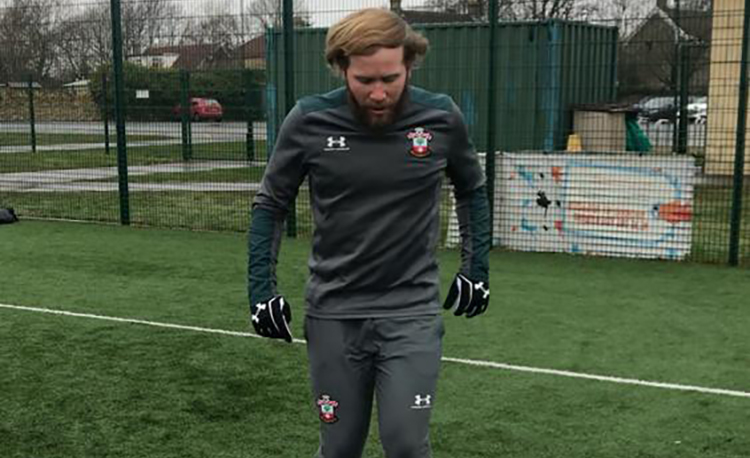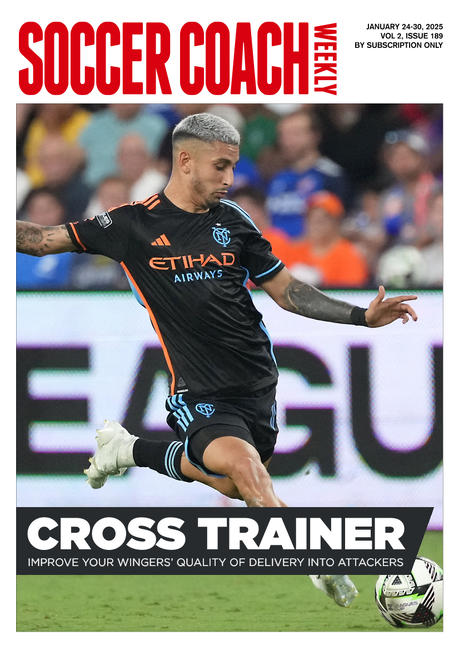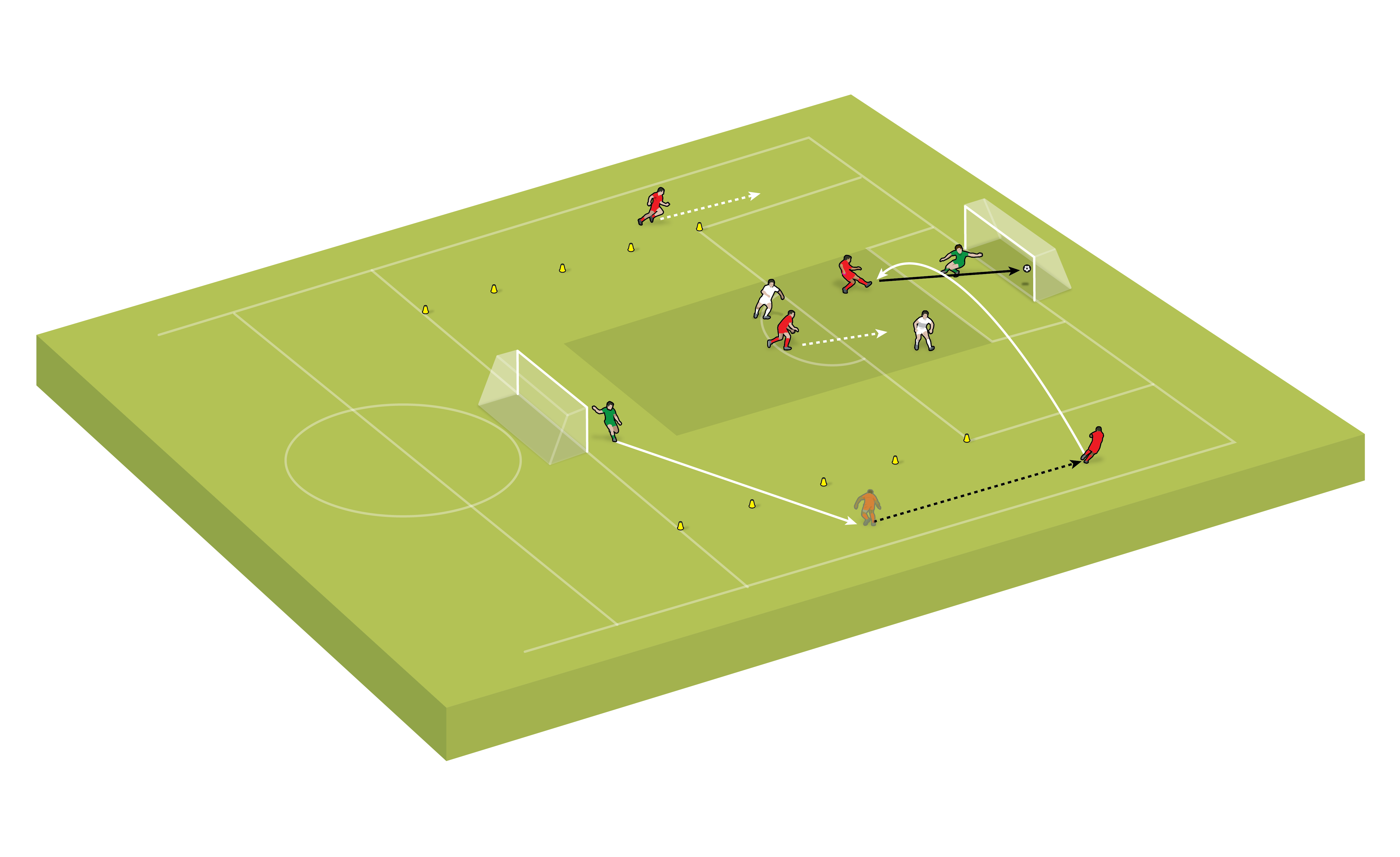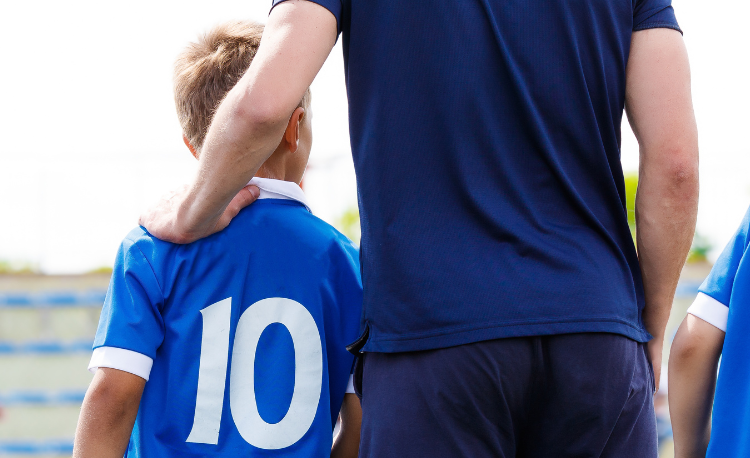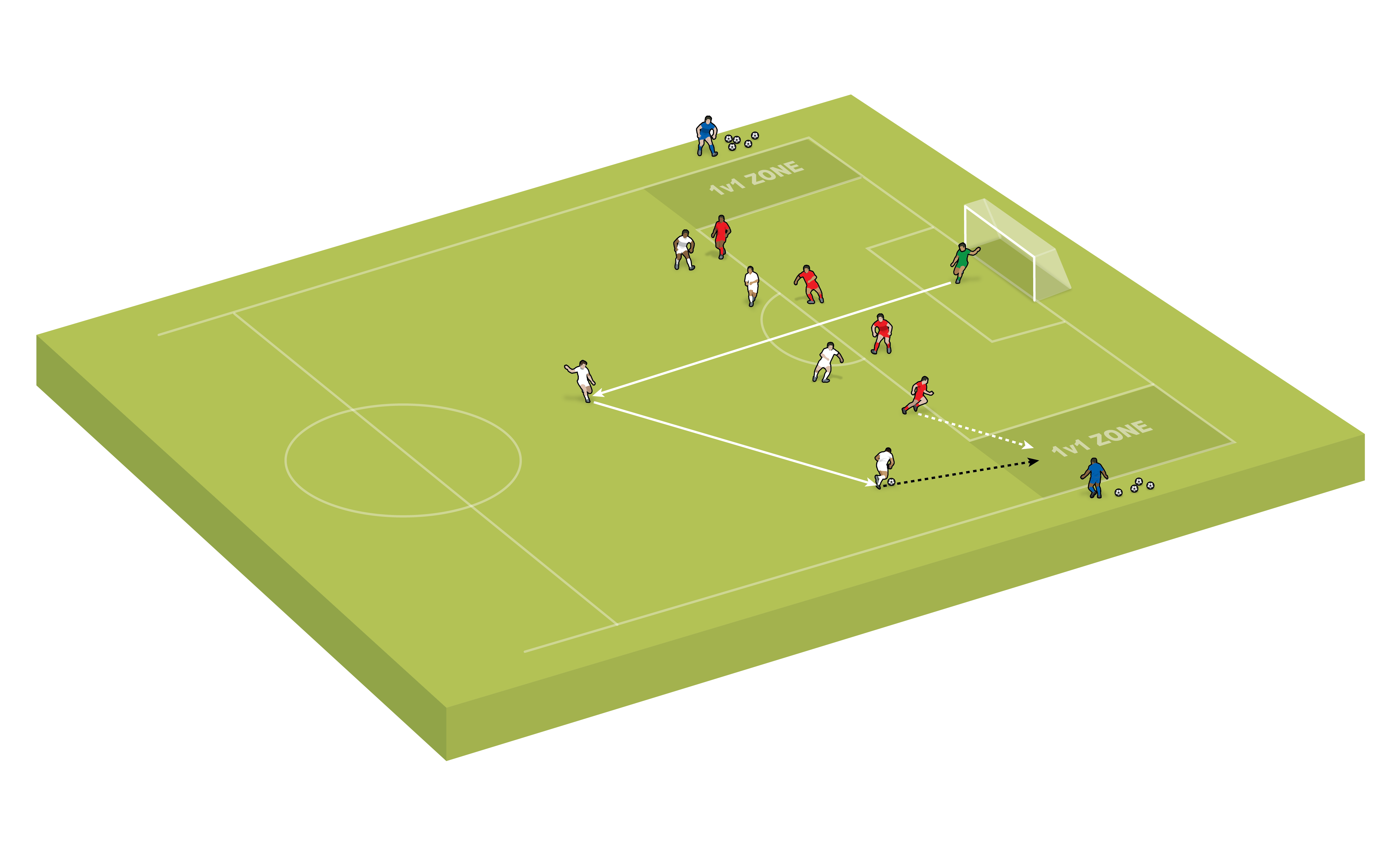Michael Wright: Coaching 1v1 dominance in defending
Southampton academy coach Michael Wright on 1v1 dominance in defending and the development of ’super strengths’. Steph Fairbairn asks the questions
Michael Wright has coached within the youth ranks at Premier League club Southampton for the past decade.
Now working with the under-nines to under-11s in the academy, he has previously held roles with various other age-group teams and in the recruitment department.
His coaching journey began aged 17, and ramped up when he was released as a player, when he had been, by his own admission, "more of a team player than an individual".
Coaching has taught him the importance of individual play, and he has become fascinated with the idea of 1v1 dominance.
SCW caught up with Michael to find out what the term means, what it looks like in an attacking and defensive sense, and how we can coach it…
SCW: How do you define 1v1 dominance?
MW: "For me, it’s looking for individuals that can have a real positive game impact.
"A really nice example from a few years ago was [Liverpool’s] Virgil van Dijk defending against [Tottenham’s] Son [Heung-Min] and [Moussa] Sissoko.
“He was in a 1v2 situation and understood his opponent. Sissoko is very right footed, he shut off Son, showed Sissoko on his left and forced a shot that went miles over the bar.
"That’s really intelligent, good defending.Sissoko is probably not as competent in that area as Son, he’s right footed so you’re going to show him on to his left and drive him slightly wide to make the angle more challenging for him to get a shot on goal.
“It’s about having a positive game impact in that 1v1, 1v2, 1v3 scenario.”
SCW: At the young age groups, kids want to take the ball. When do we start building in other options - like delaying or forcing them onto their weaker foot - into the conversation about defending 1v1?
MW: "As early as possible, because it produces a level of self-awareness and awareness of the environment to make those decisions.
"If you’re working with a six-year-old, they can understand who the fastest in the group is, who the strongest in the group is, what foot someone uses. At a very basic level, that is what we’re talking about in a 1v1.
“If I was playing against Usain Bolt, I’m not going to try and sprint past him, because that’s never going to happen. A six-year-old can understand that.
"Coaching used to focus on weaknesses - now top players have ’super strengths’..."
"What you’re asking them to do is identify what their strength in this scenario. How can I win this duel by using my strength against their weakness?
“I would say, as early on in their journey as you can, in a really simple manner, ’What are you really good at?’. They may say, ’I’m really good at running past players’. That’s a really good starting point.
"If you’re really good at running past players, how can you use that in this 1v1? That allows them to think of strategies - ’I’m really good at this, I need to figure out a way to use it’.
“Coaching used to focus on weaknesses and developing those areas. Now we’re seeing a lot of the top players having ’super strengths’, which allow them to flourish in the professional or semi-pro game. There’s been a real push, which I think is positive, in exploiting those.
“David Beckham wasn’t a professional footballer because he could run past everyone - he was a professional footballer because he had an unbelievable delivery and him understanding that would allow him to identify how he’s going to win that duel."
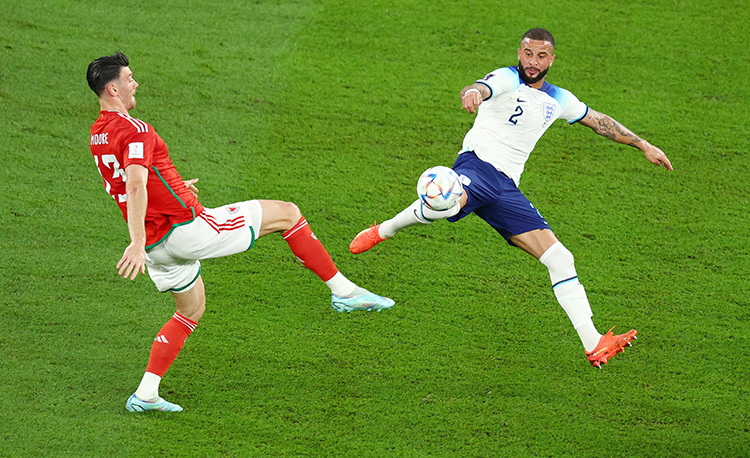
SCW: Give us some more ’super strengths’, how they can then be used from a defensive perspective and how we might coach those?
MW: "You’re going after my heart here! First of all, from a defensive point of view, if I’m very good at reading the play and going to intercept, that’s a really good ’super strength’ to have.
"Interceptions are the most aggressive form of defending because you’re stopping the ball getting to its destination.
"So if that’s a ’super strength’ of yours - that you can anticipate body shape and pass delivery and then intercept, that’s fine.
"In terms of the younger age groups, understanding my body shape compared to someone else’s body shape, and how I can utilise that [is important].
"Using myself an example, I’m probably very handsy when I’m defending because I’ve got a relatively strong upper body that allows me to do that. What I’m not so great with is being able to manipulate my feet.
“I would over-emphasise showing a player one way, and then try and use my frame to keep that individual there.
"Imagine I’m playing against a left-footed winger, and I’m at right back - I would probably show them outside and keep them towards the touchline, use the touchline as your friend. Then, if they try and cut back in, I would utilise my body to try and stop that and use my arms to keep them that side.
“If I was far more competent in terms of footwork patterns and being light on my feet - the terminology I use for this is ‘being in a boxer’s stance’, being able to jab in and out - I might not decide to go into that tussle because I’m really good at matching their footwork.
“If you watched the England v Wales game [at the World Cup], John Stones did it really well with Kieffer Moore, when Moore had a shot that went over the bar.
"He [Stones] was actually quite square, which is unusual, but he was able to match his footwork as the ball came inside and then got himself in a position to block.
“If they’re right-footed, what difference does that make? If they’re left-footed, what difference does that make? If they’re quick, slow, or really tricky, how does that change the way you’re going to go against them?
“So, for example, [England defender] Kyle Walker, against Moore, will try and get him into a running race every time, because he thinks he’ll win it. He might not go for the one where he’s going to try and grapple because Moore’s a bigger individual. That’s what Moore wants, that’s his ’super strength’.
"So on the real basic level with the younger ones, it’s just having a level of self-reflection - ’What am I good at? What are they good at? How can I win this duel?’."
"It’s having a level of self-reflection - ’what am I good at?’, ’how can I win this duel?’..."
SCW: Do we need to redefine what winning the duel actually is? Is it necessarily stealing the ball, or is it forcing another action that means we’re still in a good situation?
MW: "100%. It’s relative, as well. If I’m playing against Lionel Messi, then me running him out of play is a win, because there’s a very good chance that he’s going to go past me.
"Equally, if I’m against a team’s best player who’s really direct and outstanding in 1v1s, and I’m able to delay enough to get cover round and we create a 2v1, then I’ve done my job, essentially.
"Or if I’m against Trent [Alexander-Arnold], who loves to deliver crosses, and I’m able to delay long enough that he ends up having to recycle the ball, that’s a win as well. It is redefining what the win looks like.
"From a contextualised point of view, the session design becomes important because you can place emphasis on these different areas.
"So if there’s a time limit for holding the player up, and they don’t get a shot off for six seconds, you’ve done your job. Equally, if it’s a transition piece, where winning it and attacking is really important, then I need to figure out, as a defender, how am I going to win it to create the transition, and what does that look like?
"So it’s just providing different ideologies and different ideas within those practices, which then allows you to provide different solutions to them, which they then might be able to use again.”
Related Files
Newsletter Sign Up
Coaches Testimonials

Gerald Kearney, Downtown Las Vegas Soccer Club

Paul Butler, Florida, USA

Rick Shields, Springboro, USA

Tony Green, Pierrefonds Titans, Quebec, Canada
Subscribe Today
Discover the simple way to become a more effective, more successful soccer coach
In a recent survey 89% of subscribers said Soccer Coach Weekly makes them more confident, 91% said Soccer Coach Weekly makes them a more effective coach and 93% said Soccer Coach Weekly makes them more inspired.
*includes 3 coaching manuals
Get Weekly Inspiration
All the latest techniques and approaches
Soccer Coach Weekly offers proven and easy to use soccer drills, coaching sessions, practice plans, small-sided games, warm-ups, training tips and advice.
We've been at the cutting edge of soccer coaching since we launched in 2007, creating resources for the grassroots youth coach, following best practice from around the world and insights from the professional game.
